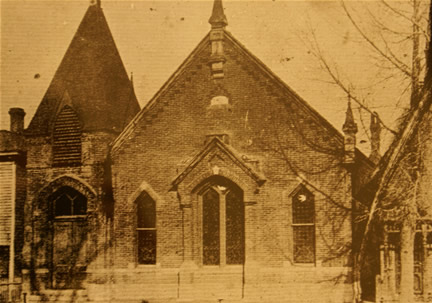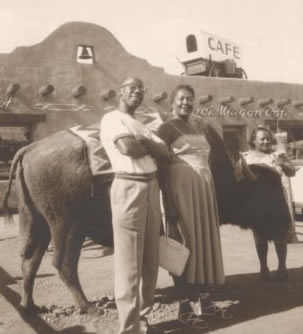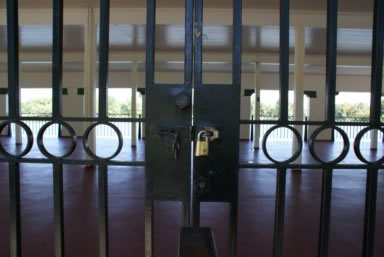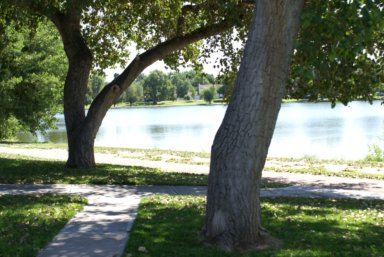By Ruthanne Johnson
As Charlie Cousins rode his bicycle from Five Points to Washington Park on August 17, 1932, he was stopped by a group of young friends whom he had hoped to join in protest against the segregation pervading Denver at the time.
“I made it within a couple of blocks of the park, saw people running back and turned around and came straight home,” said Cousins who, like his friends, was Black and repressed by the doctrine of “separate but equal” that had been infecting the nation since the 1896 Supreme Court ruling in Plessy v. Ferguson.
The group’s plan was to swim at the beach at Smith Lake inside Washington Park, which had been unofficially segregated since its opening in 1911. While the beach was not posted as whites only, Denver’s Klan days of the 1920s had made a lasting impression. Blacks were expected to stay away from the white neighborhood, while people of Japanese decent had been formally barred from the beach altogether. White bathers at the park that day answered the group’s endeavor for equality with hostility and violence.
The Rocky Mountain News reported that the scheme was hatched during a meeting at Communist headquarters the previous Friday, and that Communists brought trucks to transport Black protestors to the lake. Cousins said the Communist Party used to hold meetings in a church in the 700 block of 26th Avenue.

The old Scott Methodist Church, former meeting place for
the Young Communist League.
“I remember standing in the doorway at one of their meetings,” he said. “There were about 15 or 20 people there. They were nice people, looking for equality for everyone.”
The Denver Post called the protest a “ludicrous bathing demonstration” resulting from the “evil influences of Communism.”
On that August day, Parks Manager Walter Lowry blamed the Communists when trying to dissuade the group from swimming, saying, “You are here at the instigation of the Communists and no good can come of this. You have never tried to use this beach. … You know the white people are not going to stand for this.”
Safety Manager Carl Milliken yelled in agreement, “I will not stand for rioting and also give you fair warning that if you do go into the lake you will be acting at your own peril.”
“We’re citizens – have your cops protect us!” the protestors shouted in reply.
The News wrote that although the nearly 150 Black demonstrators – “many of them accompanied by women friends” – had been warned to leave quietly, the group swept “past Milliken and Lowry . . . ran to the lake’s edge and, with a shout, entered the water.”
An “army” of whites twice their number advanced toward the swimmers from the west side of the lake, nearly all carrying either clubs or rocks. The Blacks “fled the water,” and the whites gave chase.
Protestors reached the three trucks in which some had arrived, and there the alleged Communist leader, Jay Anyon, “sought to rally them to take a stand.” The Black demonstrators were pummeled with fists, bricks and rocks, many of them returning to Five Points with cuts and bruises as evidence of the harsh reaction against their efforts to integrate the beach. In lieu of arresting the whites who had assaulted the protestors, however, police took into custody seven of the alleged Communists and 10 young Black men. Cousins crossed paths with those on their way home who had not been arrested, and turned around.
 Five Points resident Harry Chambers (left) was one of the young men arrested at Smith Lake that summer day in 1932. His daughter Sharon Knox-Chambers still lives in Denver, but only recently found out about her father’s involvement in the protest. Five Points resident Harry Chambers (left) was one of the young men arrested at Smith Lake that summer day in 1932. His daughter Sharon Knox-Chambers still lives in Denver, but only recently found out about her father’s involvement in the protest.
“He never said anything about swimming at Washington Park or about being arrested, but I remember him telling me about going to watch local boxing matches with his friends,” she said. “The doormen only allowed one of them inside and would make them fight each other for entrance.”
In those days, boxing matches at the Olympic Gym at 25th and Curtis were a big community draw. Knox-Chambers said her father also told her about Blacks only being allowed to swim at the Bath House swimming pool on Fridays – just before its weekly cleaning.
Five Points native Nora Jane Holliday, 92, said she remembers the August 17 protest as the second time members of the Black community had attempted to swim at Smith Lake.
“I remember hearing about the plans, but my grandmother usually protected us from things like that,” she said, adding that her family usually swam at Denver Lake, a picnic and swimming area frequented by residents from her neighborhood.
Labeled by the News as a race riot, the incident was, as many longtime Five Points residents remember, little more than a protest barely talked about afterwards. The News, however, reported that after their swim, the protestors were involved in a half-hour struggle that spanned 10 blocks on the park’s eastern side. The paper also reported that after the incident, “heavily-armed police patrols guarded the thickly populated Five Points district against a possible new outbreak.”

Denver native David Smith, 92, was working as a “soda jerk” in Pencol Drugstore on the corner of Pennsylvania Street and Colfax Avenue the morning of the protest, and said he has no recollection of extra police guarding the Five Points neighborhood.
“I don’t remember anything about police patrolling our streets or about any Communists coming to our neighborhood to speak,” he said.
Holliday, who no recollection of the Communists rallying people, confirmed Smith’s viewpoint, saying, “I don’t remember any police in the area – just that a few people talked briefly about what happened. Back then, there were whites-only restaurants, theaters, and other businesses in Denver.”
While this August marked the 75th Anniversary of the protest at Washington Park, the incident remains vaguely documented and unknown to most people – even to many in Denver’s Black community. Denver residents who lived in the area at the time remember the incident as something fairly insignificant in their old neighborhood – which to them was a safe haven from the discrimination beyond its borders.
Luckily for those arrested on August 17, 1932, only an informal police court proceeding ensued. This meant the young protestors would not have a permanent criminal record. Also lucky for the protestors was their relatively safe escape from the water. Not more than 15 years earlier, a similar protest left one Chicago boy drowned after being hit in the head by a rock.
Only 18 years old at the time of the Washington Park incident, Chambers had a bright future ahead of him. He had been one of the first Black members on Manuel High School’s swim and wrestling teams, and had played in the school band. He went on to start his own business and play trumpet for the Hogie Harper and Kenneth McVey bands. More than 60 years after being arrested for swimming at the whites-only beach in Washington Park, Chambers died. His service was held at Zion Baptist Church – the oldest African-American church in Colorado, founded by ex-slaves in 1865.
Anyon of the Communist Party was only 22 at the time of the protest and didn’t talk about it with his children either.
“I knew my father was involved in organizing different labor organizations, like the beet growers, and he talked about being arrested and beat up by the cops. But I have no idea if that was in reference to Denver,” said Anyon’s son, Robert, who lives in San Francisco and works with youth in the legal system. “He was definitely in the Communist Party, and I don’t doubt for a minute what he was doing in those cities.”
Although firsthand accounts of the Washington Park “riot” are mostly limited to the articles printed in the News and Post in the days following the incident, books noting the historical protest include Denver: Mining Camp to Metropolis by Stephen J. Leonard and Thomas J. Noel and South Denver Saga by Phil Goldstein. Information about the protest can also be found on the Web site of Washington Park’s East Neighborhood Association at www.neighborhoodlink.com/denver/washpark/history.

Today, the swim beach at Smith Lake is gone, but the park now boasts a recreational center with a pool and weight room. Since the center opened in the 1970s, ethnicity has never been a condition for membership. Outside, a diversity of park patrons can be seen fishing along the shore of the lake, pedaling bicycles around the park’s paved loop, or picnicking atop one of the wide-open grassy areas.
While the 1932 protest is nearly forgotten in Five Points where protesters lived, it seems lost to history at contemporary Washington Park, where the swim beach was closed many years ago due to health concerns. In August of 2007, the park showed no signs of its discriminatory past – thanks to the brave citizens who fought year after year to eradicate segregation.
Return To Top |
